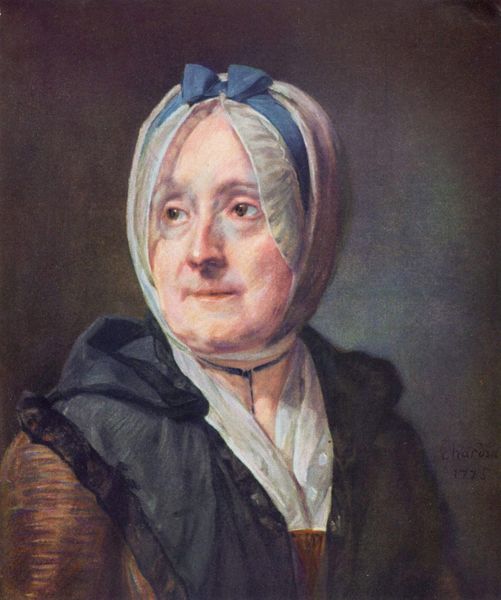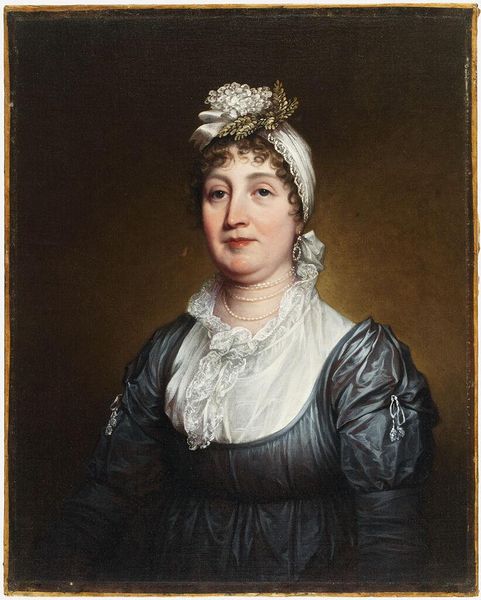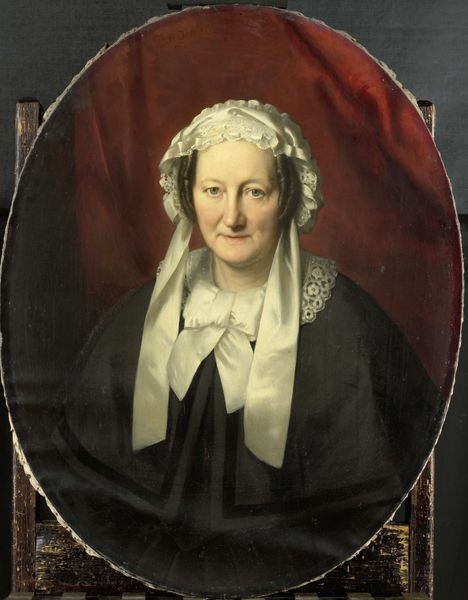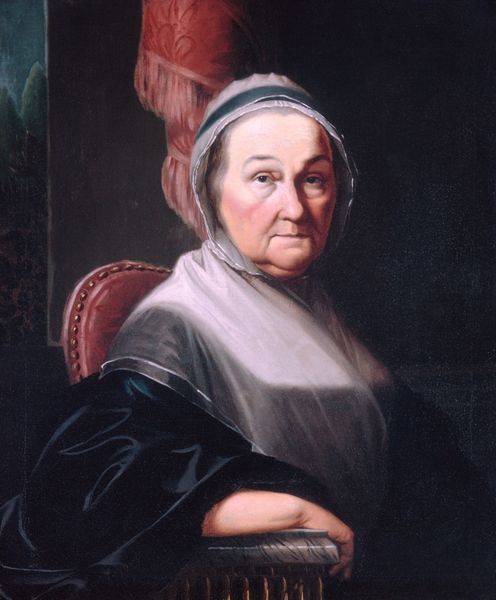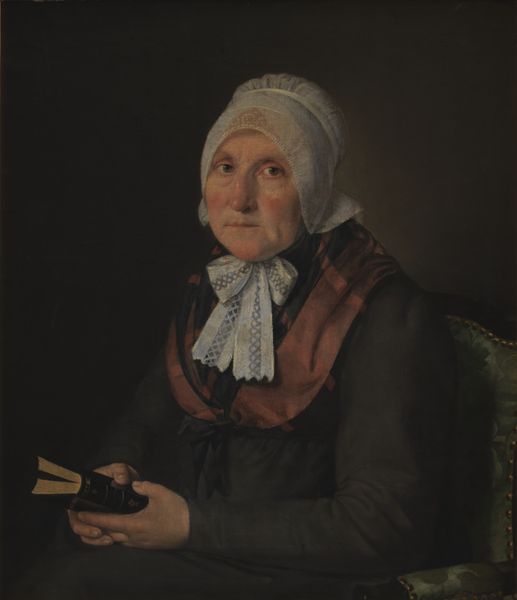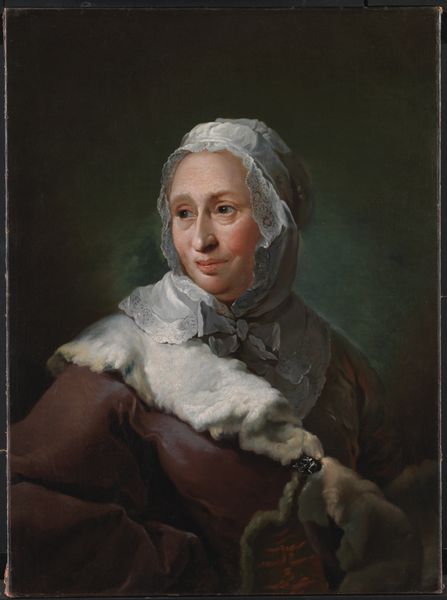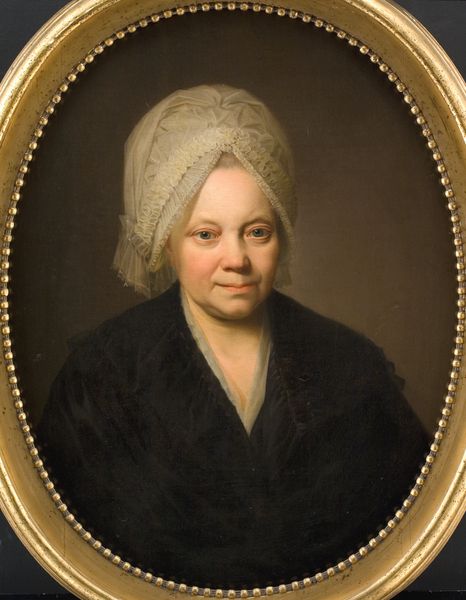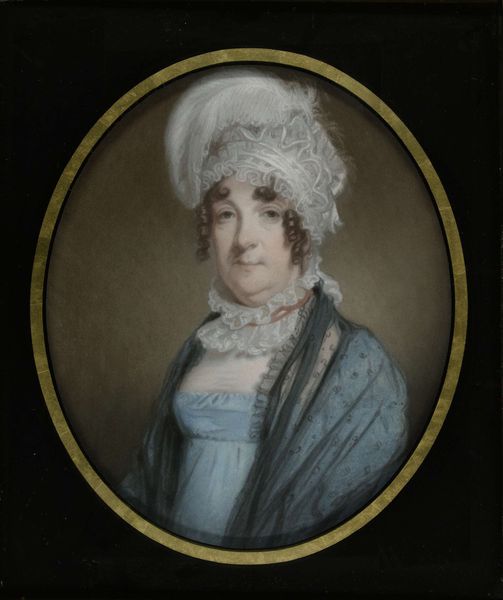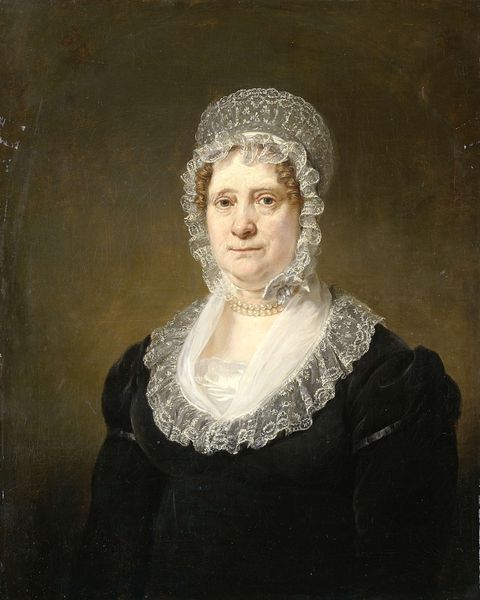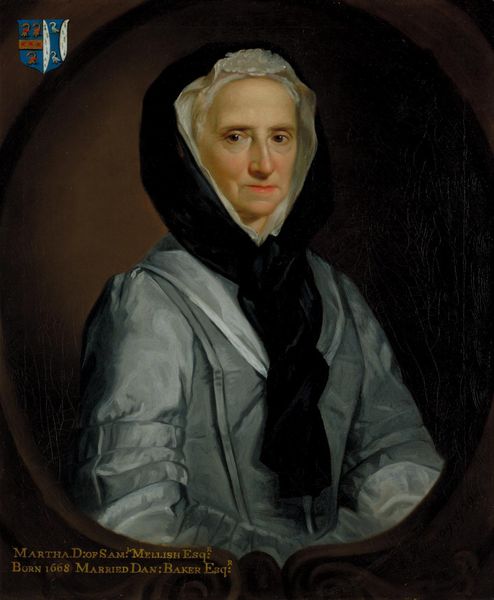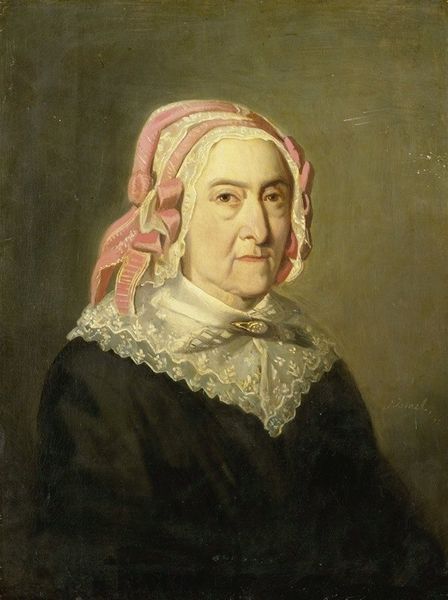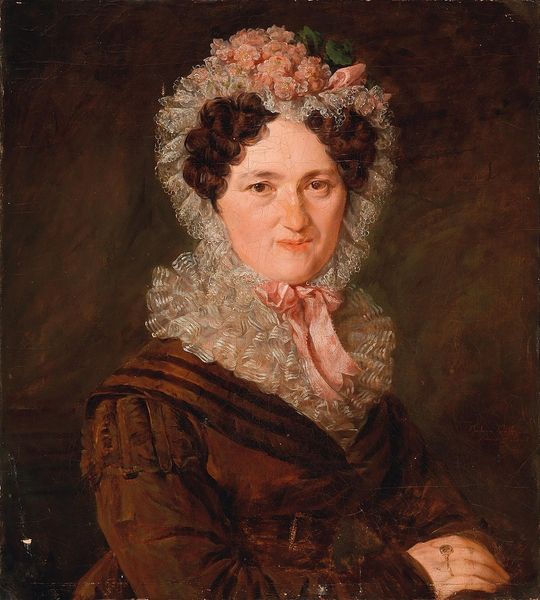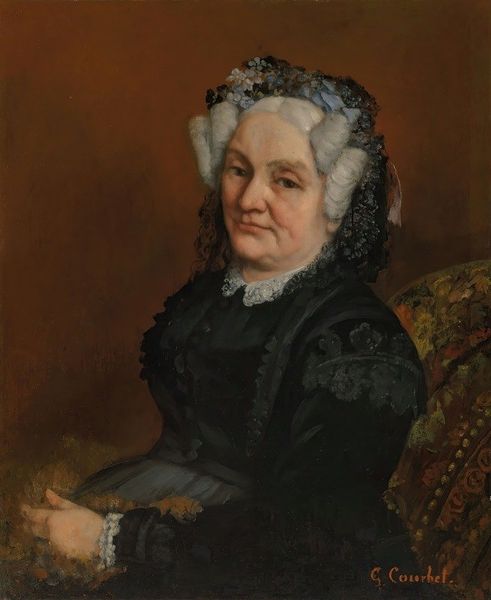
Dimensions: 455 × 375 mm
Copyright: Public Domain
Jean-Baptiste-Siméon Chardin captured his wife with pastels on paper, a medium that allowed for a softness fitting to his subject. This portrait departs from the aristocratic grand manner that dominated French portraiture. Here, the artist depicts his spouse, Madame Chardin, without idealization or ostentation. Painted in France, likely in the mid-18th century, the portrait reflects the growing importance of domestic life and the rising status of the bourgeois. Chardin, though favored by the French Royal Academy of Painting and Sculpture, often chose humbler subjects: still lifes of kitchen objects and quiet scenes of family life. This resonated with a public increasingly skeptical of the monarchy and the aristocracy. By presenting his wife with such directness and humanity, Chardin seems to align himself with emerging Enlightenment ideals, a move away from the formal constraints of the court. To understand this fully, we can consult exhibition records from the period, study the artist’s biography, and look at the critical reception of his work. The meaning of this portrait is thus constructed through its historical and institutional contexts.
Comments
No comments
Be the first to comment and join the conversation on the ultimate creative platform.
